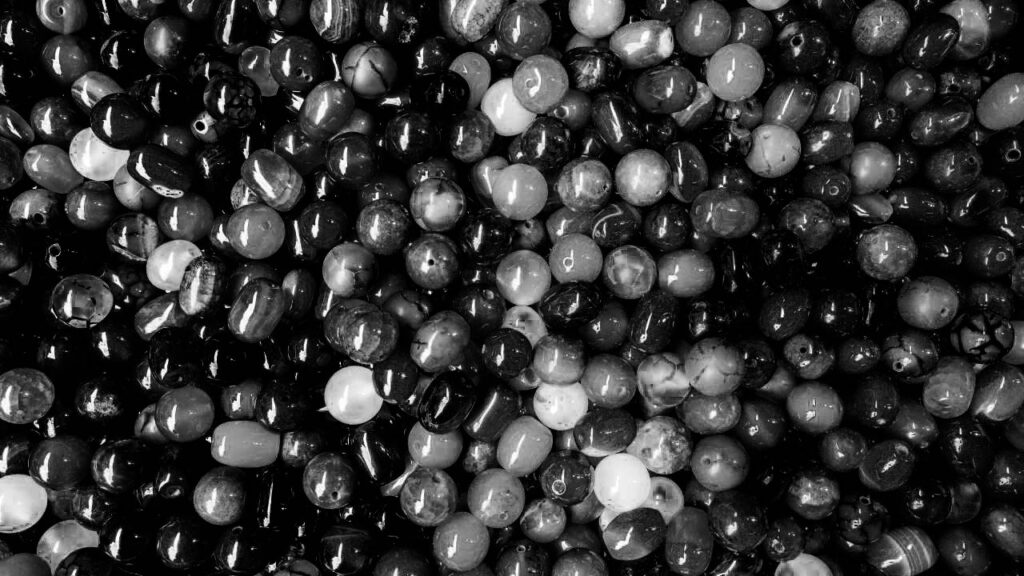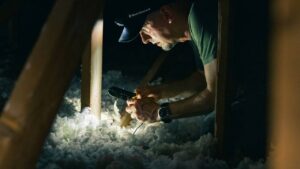Are you tired of high energy bills and a home that never seems to stay warm enough? Cavity wall insulation beads might be the solution you’re looking for. These tiny beads can significantly improve your home’s energy efficiency by reducing thermal conductivity, helping to keep your house warmer in winter and cooler in summer.
Installing cavity wall insulation beads involves injecting them into the gaps between your home’s walls. This not only provides excellent insulation but also helps in preventing moisture buildup, which is a common issue in many homes. As a result, your home becomes more comfortable and your energy bills could be reduced.
Moreover, using cavity wall insulation beads can contribute to a more environmentally friendly lifestyle by lessening the energy needed to heat or cool your home. Imagine enjoying a snug, energy-efficient home while also playing your part in protecting the planet. Your journey towards better home insulation starts with understanding these simple yet effective beads.
Understanding Cavity Walls and Insulation
Cavity walls are a key aspect of building construction, and insulation within these walls significantly impacts energy efficiency and comfort. Knowing how they function and why insulation is crucial helps optimise your home’s performance.
Basics of Cavity Wall
A cavity wall consists of two layers (known as leaves) separated by a gap (the cavity). Historically, they’re common in houses built after the 1920s. The gap between the leaves helps reduce heat transfer, improving thermal efficiency.
The outer leaf typically faces the weather, while the inner leaf tends to support the structure. Materials used range from brick to concrete blocks. Properly understanding this structure is important for effective insulation.
Importance of Insulation
Insulating cavity walls limits heat loss, making your home warmer in winter and cooler in summer. This can significantly cut down on energy bills and carbon footprint. Without insulation, you might notice cold spots indoors, leading to discomfort and higher heating costs.
By filling the cavity with insulation beads, you minimise heat loss effectively. Modern insulation methods are straightforward and involve minimal disruption.
Types of Insulation Materials for Cavity Walls
Choosing the right insulation material for your cavity walls can enhance your home’s energy efficiency, comfort, and cost savings. Several options are available, each with its own benefits and considerations.
Polystyrene Beads
Polystyrene beads, also known as expanded polystyrene (EPS) beads, are tiny, lightweight balls used for insulating cavity walls. These beads fill the cavity spaces effectively, providing excellent thermal insulation.
EPS beads are resistant to moisture, reducing the risk of dampness within the walls. Their small size allows for easy and thorough installation, ensuring that gaps and voids are minimised. Moreover, polystyrene beads are durable, maintaining their insulating properties for many years without settling or compacting.
If you are looking for a cost-effective and efficient insulation material, polystyrene beads are a worthwhile option to consider.
Spray Foam Options
Spray foam insulation is applied as a liquid that expands to fill cavity wall spaces. There are two main types of spray foam: open-cell and closed-cell foam. Both types provide excellent insulation and can reduce energy bills significantly.
Open-cell spray foam is softer and more flexible, making it ideal for reducing noise and improving air quality within your home. Closed-cell spray foam, in comparison, is denser and offers higher R-values, enhancing thermal resistance and providing a robust barrier against moisture and air infiltration.
Installing spray foam requires professional application, ensuring a thorough and uniform layer of insulation. This material is particularly effective in irregularly shaped cavities.
Rigid Board Solutions
Rigid board insulation involves the use of panels made from materials such as polyurethane, polyisocyanurate, or phenolic foam. These boards are cut to fit and inserted into cavity walls, offering high thermal resistance and strength.
Rigid boards provide a continuous layer of insulation, reducing thermal bridging and increasing energy efficiency. They are also moisture-resistant, avoiding issues related to dampness. Additionally, these boards can be combined with other forms of insulation for enhanced performance.
Installing rigid boards might require more effort compared to other materials, but their long-term benefits and durability make them a popular choice among homeowners seeking reliable insulation.
Insulation Beads: Features and Benefits
Insulation beads are small, lightweight materials used for wall insulation. They offer excellent thermal efficiency and environmental benefits, making them a preferred choice for modern construction.
Advantages of Bead Cavity Wall Insulation
Energy Efficiency: Bead cavity wall insulation improves energy efficiency. You will notice lower heating costs as the beads trap heat inside your home.
Water Resistance: The beads are water-resistant, which means they help prevent damp problems. This adds to the longevity and durability of your building.
Non-Toxic: These beads are non-toxic, ensuring a safe environment for you and your family. This makes them an excellent choice for indoor applications.
Flexible Installation: The beads can flow into small gaps and spaces, making installation easy. This flexibility ensures a comprehensive insulation solution.
Environmental Contribution
100% Recyclable: Insulation beads are 100% recyclable. You contribute to reducing waste when you choose these sustainable materials for your insulation needs.
Expanded Polystyrene: Many insulation beads are made from expanded polystyrene. This material is durable and boasts a long lifecycle.
Low Carbon Footprint: Unlike other insulation materials, bead cavity wall insulation has a lower carbon footprint. This makes it an eco-friendly choice for conscientious homeowners.
By opting for bonded bead insulation, you help in conserving energy and reducing environmental impact, benefiting both your home and the planet.
Installation Procedure
To install cavity wall insulation beads, you’ll need to start with an initial survey, proceed with the drilling and filling process, and then conduct quality checks to ensure that the installation meets best practice standards.
Initial Survey and Assessment
A professional survey is critical before the installation begins. Qualified assessors, such as SEAI-approved contractors, will inspect your property to determine if it’s suitable for cavity wall insulation.
During this survey, they’ll check the condition of your walls, measure the wall cavities, and identify any structural issues. Key factors like existing dampness or rubble in the cavities, and the presence of any obstructions, will also be noted. They might use small cameras or boroscopes to get a clear look inside the cavities.
Drilling and Filling Process
The drilling process involves creating small holes in the external wall, typically around 22mm in diameter. These holes are spaced evenly in a grid pattern to ensure uniform coverage of the insulation. The contractors will use a specialised drilling machine to complete this task efficiently.
Once the holes are drilled, the cavity wall insulation beads are injected through these holes using blowing equipment. A binding agent may also be used to hold the beads in place. The process ensures that the beads are evenly distributed within the wall cavity, providing an effective thermal barrier.
After the cavities are filled, the drilled holes are sealed with mortar or a matching material to restore the wall’s appearance.
Quality Checks
After installation, thorough quality checks are necessary to ensure the insulation is correctly installed. Contractors will verify that the cavities are fully filled using tools like thermal imaging cameras, which can detect any gaps or cold spots.
They’ll also check the external finish to ensure all drilled holes are properly sealed. Feedback from these quality checks can help improve the installation process and ensure you get the best possible insulation performance.
Following industry standards, especially those set by SEAI, ensures your insulation is top-notch and enhances the energy efficiency of your home.
Ensuring Quality and Compliance
When it comes to cavity wall insulation beads, prioritising quality and compliance is crucial. This process involves adhering to established standards and ensuring that the companies you engage with have a solid reputation backed by guarantees.
Certifications and Standards
Adhering to industry standards is paramount. Look for certifications from reputable bodies such as the NSAI (National Standards Authority of Ireland) and the SEAI (Sustainable Energy Authority of Ireland).
Certified products and services have undergone rigorous testing to ensure their effectiveness and safety. The presence of certifications assures you that the materials and installation methods meet high-quality criteria, providing peace of mind.
Guarantees and Trustworthiness of Companies
Reputable companies provide guarantees that protect your investment. These could include warranties on materials and workmanship for a specified period.
Look for customer testimonials and trust signals, such as accreditations from bodies like NSAI. Transparent companies often have a proven track record and clear communication about their guarantees, which reinforces their trustworthiness.
Ensure due diligence by checking reviews and verifying the company’s history. This verification helps you avoid pitfalls and collaborate with reliable experts in cavity wall insulation.
Financial Aspects and Incentives
Choosing cavity wall insulation beads can significantly reduce your heating bills and potentially benefit from grants and funding opportunities. Here’s a closer look at how you can save money and the financial assistance available.
Reducing Energy Costs
Investing in cavity wall insulation beads can lead to substantial savings on your energy costs. Proper insulation ensures that heat remains inside your home during winter and keeps it cooler during summer. This efficiency means your heating system doesn’t have to work as hard, translating to noticeable savings on your heating bills.
For instance, homeowners may see a reduction of up to 30% on their annual heating costs. Introducing insulation beads can be a long-term investment; although there’s an initial cost, the reduction in energy bills can recoup this within a few years.
Available Grants and Funding
You might be eligible for various grants and funding options to support your insulation project. Several national and local schemes offer financial assistance to homeowners who want to improve their energy efficiency. One prominent organisation, the Sustainable Energy Authority of Ireland (SEAI), offers grants for cavity wall insulation.
Engaging an SEAI-approved contractor is often a prerequisite to accessing these funds. Additionally, programmes like the Warmer Homes Scheme may offer full grants to cover the insulation cost for qualifying individuals, ensuring that financial barriers don’t stand in the way of energy efficiency. Always check the latest grants as these schemes can frequently update or change.
Post-Installation Considerations
After installing cavity wall insulation beads, you might notice changes in your home’s temperature and energy efficiency. These beads help reduce heat loss and improve overall comfort.
Check for Thermal Looping: Occasionally, thermal looping can occur, resulting in cold spots. Ensure the insulation was evenly distributed to avoid this issue.
Monitor Condensation Levels: Insulation should reduce condensation. If you observe excess moisture, check ventilation systems to make sure they are functioning properly.
Inspect External Render: Post-installation, review the external walls for any damage or changes. External render might need minor repairs to maintain effectiveness and appearance.
A few key tips to keep in mind:
- Evaluate Energy Bills: Track your energy usage. Lower bills indicate improved energy efficiency.
- Conduct Regular Maintenance: Schedule periodic inspections to guarantee insulation remains effective.
- Keep Documentation: Maintain records of the installation. This information can be useful for future reference or potential home resale.
Staying vigilant on these aspects ensures you get the best out of your cavity wall insulation beads.


